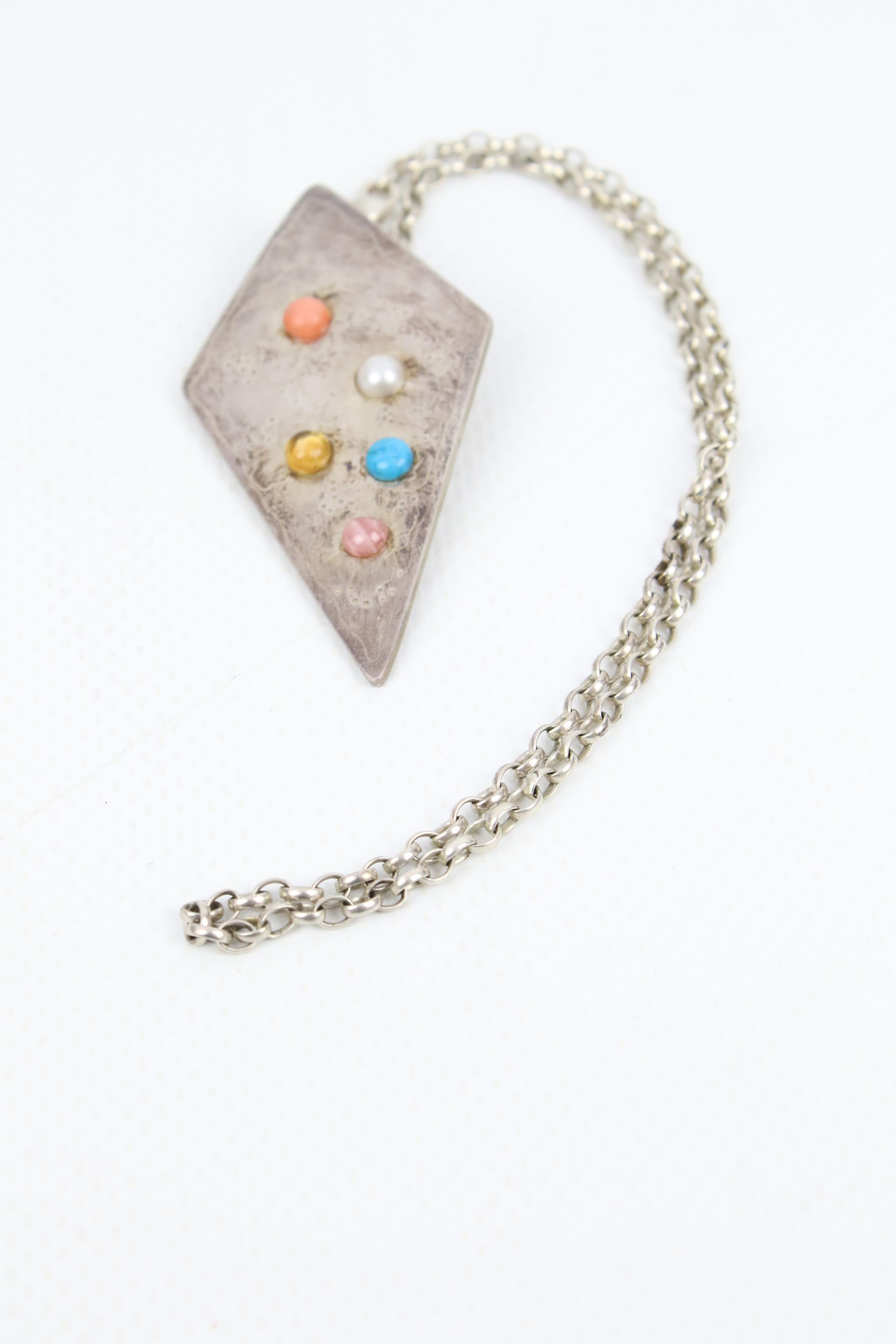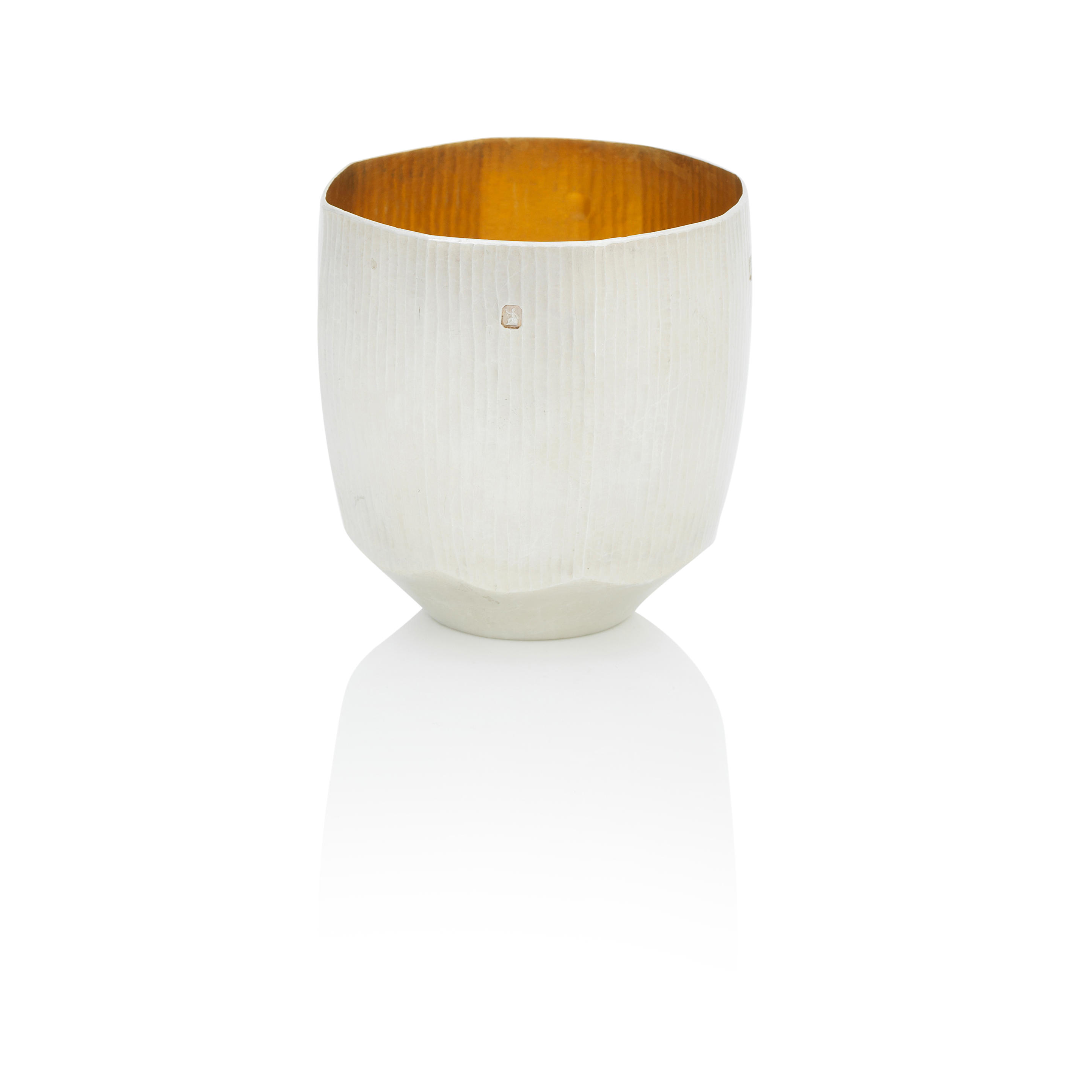the shaped dish on stepped foot with planished surface and flared rim, set to interior with removable turned wooden base with circular cartouche to centre 14.8cm diameter, 13.2oz Graham Leishman Stewart, 1955-2020 Not only was Graham Stewart one of Scotland’s foremost silversmiths of the late 20th and early 21st centuries, but he was also a master of hand engraving. The inspiration for his forms was mainly nature. He did not replicate what he saw, but it was organic and often intuitively so. He had great respect for words and was a devotee of the Irish bard Seamus Heaney. When he discovered Heaney’s favourite prose was the BBC’s Radio’s Shipping Forecast, this resulted in a series of bowls that have been much admired. He chose and arranged the almost hypnotic words of the Forecast with the flow of a poet. The series was expanded to other themes, the inspiration coming from poetry and Celtic spirituality. The engraving brought life to his bowls. Stewart established his workshop in Dunblane in 1978. He always worked with a small team of skilled craftsmen. His father an industrial designer, was a leading influence in his life as he had a keen interest in silversmithing. His brother, an engineer, joined him when he retired which explains why Stewart used a hydraulic press, not a tool normally associated with silversmithing, for very large commissions. As visitors enter the Scottish Parliament, they are greeted with the Three Honours a large silver sculpture designed and made by Stewart. It is an impressive, intertwined creation with the three elements representing Scotland’s State Jewels, its crown, sceptre and sword, which are held in Edinburgh Castle. Arguably it has been one of the most viewed pieces of modern silver in Britain today. His commissions reflect the admiration and respect others had for him, including those commissioning the impressive claret jugs which are part of the Millennium Collection for Bute House. His shop in Dunblane provided a great opportunity to meet and chat with Stewart, allowing customers to grow their collections and acquire one-off pieces. With important pieces now included within numerous British institutions including the Aberdeen Museum and Art Gallery, as well as The Pearson Silver Collection, which is devoted to Post-War II British silver, his work is well represented in both in public and private collections which supports his place a key contributor to modern Scottish and British silver.
the shaped dish on stepped foot with planished surface and flared rim, set to interior with removable turned wooden base with circular cartouche to centre 14.8cm diameter, 13.2oz Graham Leishman Stewart, 1955-2020 Not only was Graham Stewart one of Scotland’s foremost silversmiths of the late 20th and early 21st centuries, but he was also a master of hand engraving. The inspiration for his forms was mainly nature. He did not replicate what he saw, but it was organic and often intuitively so. He had great respect for words and was a devotee of the Irish bard Seamus Heaney. When he discovered Heaney’s favourite prose was the BBC’s Radio’s Shipping Forecast, this resulted in a series of bowls that have been much admired. He chose and arranged the almost hypnotic words of the Forecast with the flow of a poet. The series was expanded to other themes, the inspiration coming from poetry and Celtic spirituality. The engraving brought life to his bowls. Stewart established his workshop in Dunblane in 1978. He always worked with a small team of skilled craftsmen. His father an industrial designer, was a leading influence in his life as he had a keen interest in silversmithing. His brother, an engineer, joined him when he retired which explains why Stewart used a hydraulic press, not a tool normally associated with silversmithing, for very large commissions. As visitors enter the Scottish Parliament, they are greeted with the Three Honours a large silver sculpture designed and made by Stewart. It is an impressive, intertwined creation with the three elements representing Scotland’s State Jewels, its crown, sceptre and sword, which are held in Edinburgh Castle. Arguably it has been one of the most viewed pieces of modern silver in Britain today. His commissions reflect the admiration and respect others had for him, including those commissioning the impressive claret jugs which are part of the Millennium Collection for Bute House. His shop in Dunblane provided a great opportunity to meet and chat with Stewart, allowing customers to grow their collections and acquire one-off pieces. With important pieces now included within numerous British institutions including the Aberdeen Museum and Art Gallery, as well as The Pearson Silver Collection, which is devoted to Post-War II British silver, his work is well represented in both in public and private collections which supports his place a key contributor to modern Scottish and British silver.















Try LotSearch and its premium features for 7 days - without any costs!
Be notified automatically about new items in upcoming auctions.
Create an alert